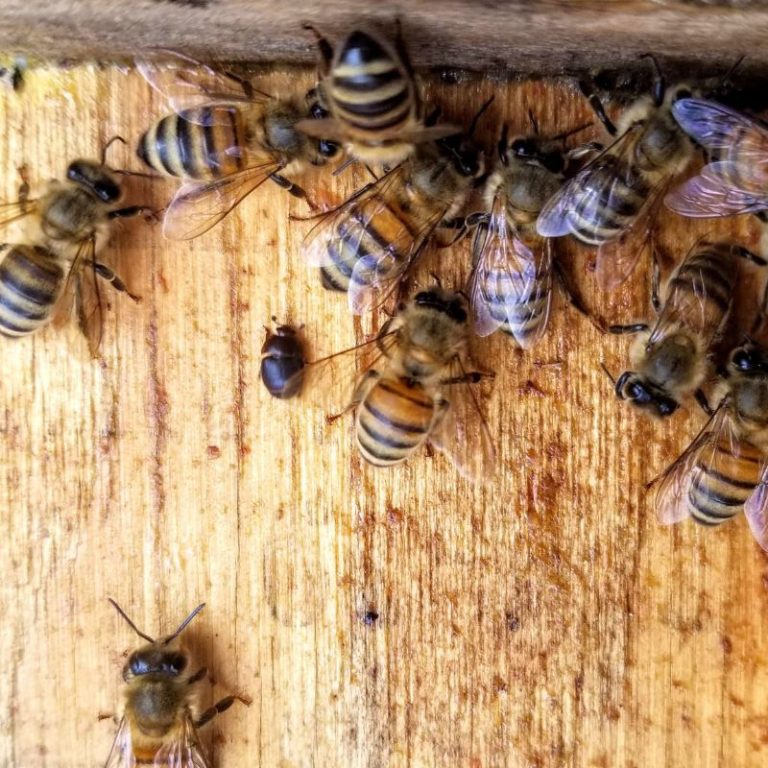There have been increasing reports of the Small Hive Beetle found in Australian hives. While it is not yet a notifiable disease across all of Australia, the beetle can have a devastating effect if left unchecked. We’ve put together this article to give you the most up-to-date advice on the symptoms to look out for, information on how they spread, plus the best things to do to eradicate the beetles and prevent them from returning.
What is a Small Hive Beetle?
Dark brown or black in colour and oval in shape, small hive beetles (SHB) can cause significant damage to your bee colonies if not addressed promptly. Despite their small size, these beetles are capable of flying up to 10km, which is a remarkable feat for a beetle.

What damage can SHB do to my colonies?
SHB larvae can burrow and tunnel through honeycomb and eat eggs, bee larvae honey and pollen. SHB larvae can also cause the honey to ferment by defecating in the honey. In some cases, this will cause the queen to stop laying eggs and the adult population of bees to drop.
How to know if you have a SHB infestation
Visual inspections are the best way to check for SHB in your hives. Follow these steps to check your hives thoroughly:
- Remove the hive lid and inspect the underside for beetles.
- Lift the hive mat (if there is one) and look for beetles that are trying to hide in the cells or running down the face of the combs.
- Take off the super and place it on an upturned hive lid. Wait for 1 to 2 minutes, then check the lid for beetles that have moved from the combs to hide in the dark.
- Lift the bottom box and carefully inspect the bottom board, particularly in the back corners and areas with debris.
- If the bottom box is fixed to the bottom board, remove all the combs and check the bottom board for beetles. Check each comb for beetles and larvae as you remove them.
- Inspect all honey and brood combs for beetles and larvae. Keep in mind that larvae can be found on any comb throughout the hive, and they may only be visible once you remove the cell caps.
- Check pollen cakes for larvae and in-hive open sugar syrup feeders for beetles.
Depending on where in Australia you are, SHB may not be a notifiable disease. Check your local and state authorities if you encounter SHB among your colonies.
How does SHB spread
One of the primary ways SHB spreads is through the movement of hives and hive products between infested and non-infested areas. This includes the movement of bee colonies by beekeepers or transportation of infested hive products such as honeycomb, bee-collected pollen, slum-gum, beeswax cappings, and scraps that have not been melted down. SHB is also a pest of stored combs and supers, which can quickly spread through the movement of these stored combs and supers that appear clean.
SHB can also spread on protective clothing and bee veils. Adult SHB may be present for extended periods in hives that show no signs of damage by SHB larvae.
How to eradicate SHB
Keeping rooms at a temperature of 10°C or less can prevent adult Small Hive Beetles (SHB) from laying eggs and reduce SHB larvae activity. Freezing frames and hive parts at -7°C for 4-5 hours can kill all life stages of SHB. Beekeepers have access to a variety of chemical and non-chemical options to manage SHB infestations within their hives.
Prevention Tips for SHB
To protect beehives from SHB, you must maintain strong and healthy colonies with a young and productive queen bee and a high ratio of bees to combs. Beekeepers should practice good hygiene within the hive by removing debris from bottom boards, burr comb, and other areas where SHB can hide and breed. Maintaining good hygiene practices around the apiary, such as removing beeswax scraps, old combs, and dead colonies that can attract SHB, is also essential. You can also replace old bases with our vented base boards in either 8 frame or 10 frame compositions and check out our frame style beetle trap to protect your hives.
See the Agriculture VIC website for more information on SHB and please reach out if you have any questions about equipment and beekeeping gear that can help you against SHB.
